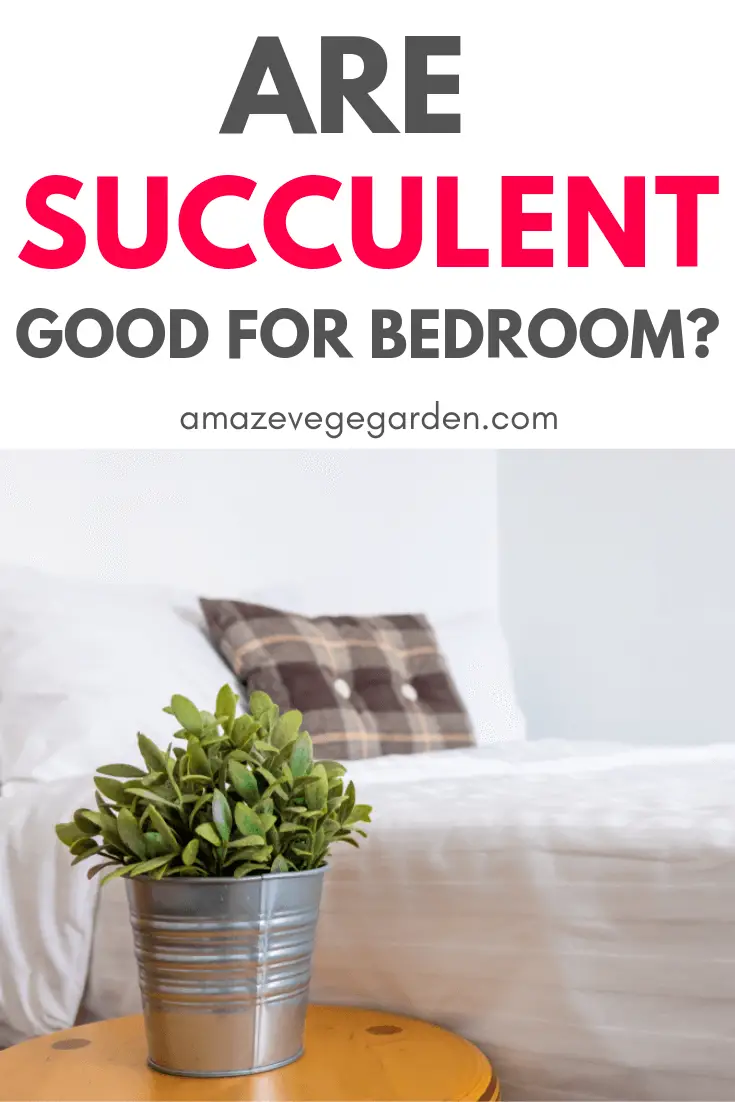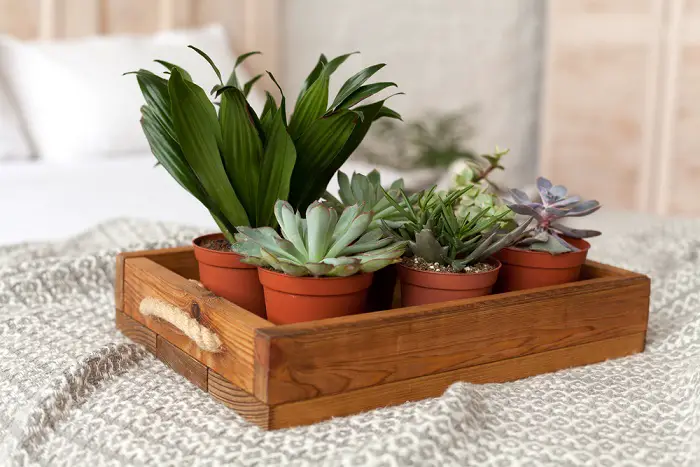My maternal grandmother loved and had so many plants and flowers, all of which bloomed and spread across her yard. She even tended some special kinds of plants on the balcony roof. She was living alone with her unmarried son, my uncle – Tom.
When she passed away several years ago, my uncle decided to keep all the plants and flowers as a memory of his mother. Still, flowers need to be watered daily. And, unfortunately, my uncle was so busy working and traveling abroad that more than 90% of his plants and flowers withered.
He was so disappointed with himself. But I told him not to worry and enlighten him with succulent plants, also known as succulents.
Succulents are low-maintenance plants, which don’t require your full attention. Dogs bury food for later use. People save money for darker days. And succulent plants save water to ensure their survival.
So, what’s the difference between succulents and normal plants? Succulent plants are renowned for their fleshy roots and stems — due to their development of water-storing capacity. They belong to the drought-resistant plants family, which makes them desert plants. Nevertheless, that doesn’t mean that they cannot adapt to a more humid climate. On the contrary – that would be like a JACKPOT to them. A cave with pure spring water would be a JACKPOT to a thirsty child from some water-stress parts in Sub-Saharan Africa.
Succulents are not only good for outdoors but for indoors as well.
Not very long ago, a friend of mine asked me – “Are succulents good for the bedroom?”
My reply was – “Since they purify the air and help you sleep better – the answer cannot be a no.”
SUCCULENTS IN BEDROOM
Every plant, as a process of photosynthesis, releases oxygen. But, unlike many plants that release oxygen during the day and carbon dioxide during the night, most of the succulents produce oxygen from begging to end. Now, please understand me.
This doesn’t mean that you can’t keep other plants, which are not succulents, in your bedroom. Even though carbon dioxide would certainly not help prevent sore throats and dry skin, it isn’t poisonous for us.
If you think otherwise, throw every plant out the window. But when you do that, make sure that you throw your husband as well, for he’s releasing carbon dioxide as he sleeps as well (Smile).
Still, if we get to choose between a bedroom filled with carbon dioxide and oxygen, what would we choose? The answer is clear. Oxygen, right? That’s why I’m ever more partial to keeping succulents in my bedroom than other regular plants.
During the cold winter nights, a lot of people use air conditioners to warm up their bedrooms. But some, if not most, of the air conditioners make the air dry, leading to sore throats and unpleasant breathing.
Devices like humidifiers would increase the humidity in the room – no doubt for that. But they can never produce oxygen for you. Therefore, forget about humidifiers and let succulents do the work.
We all know that moisture is water released by plants. Therefore, the more plants you tend in your home – the better the humidity will be. And not only that. Plants, like succulents, lower your blood pressure, improve your focus, and aid you in a better zing.
Deciding what types of succulents to keep in your bedroom is not as easy as it seems, for there are over 200 varieties of succulents in the world. At any rate, if you go to the gardens out in my yard, you’d find so many types of succulents that you’d lost count.
But when it comes to my bedroom, the list falls to only two types – Aloe Vera and Burro’s Tail, which description you’ll find below in this article.
HOW TO MAINTAIN SUCCULENTS ALIVE?
The first thing to know is that not every succulent plant, like aloe and kalanchoe, does well indoors. The terrarium, for instance, needs elements outdoors, like good air circulation, to breathe. Succulents need food as well. Use organic fertilizer and feed them at least once a year.
Beware of frost. There are only a few types of succulents that can withstand freezing temperatures. All the others require protection. There are so many ways on how to protect your plants from frost. But the most common one is by using hay, mulch, and plastic barriers.
Water your succulents once to twice a week and let the water run down the drainage holes to make the soil soaked enough. Still, soaked enough doesn’t mean overfilling it with water. Too moist soil – won’t do them any good.
HOW TO KNOW IF YOUR SUCCULENT IS DYING?
Other than bug infestations, the two main problems, which could make a succulent die, are over and under-watering.
If you see dying leaves at the bottom of the plant, you shouldn’t worry. That is a normal part of the plant’s process. You’re not doing anything wrong. The old leaves die as new leaves grow. Don’t be afraid to pull the dying leaves away, but only pull them if they are easy to pull. And try not to disturb the roots as you do so.
As I’ve said, dying leaves at the bottom of the plant shouldn’t be your worry. But if you see dying leaves on the upper side of the plant, then you might have an over or under-watering problem. Yellow, transparent, and soggy leaves are a sign of over-watering – while dry, wrinkled, and crispy leaves indicate that it’s time to increase your watering schedule.
The best way to solve an over-watering problem is to cut the watering schedule and ensure that the soil has completely dried out before you water it again.
Reviving an under-watered succulent is much easier than an over-watered one. Wrinkled leaves at the upper side of the plant – usually recover after two or three watering successions. But if the leaves are completed dried out and shriveled, I’m sorry to say that it might be too late for recovery.
Read also: Why Are Your Potted Succulents Dying?
BENEFITS FROM TENDING SUCCULENT PLANTS
1) They Improve Our Health and Concentration
Many studies have shown that nature, greenery, forests, and plants sharpen our focus and boost our memory. Now, I won’t lie to you. Having succulents in your home doesn’t have the same effect on your lungs as being outside in a rainforest. It’s irrational to compare a small fan with a huge air conditioner.
But sometimes, when you can’t afford an air conditioner, the small fan would come like a blessing from heaven to you. And since we spend most of the time in our homes and not in rainforests, investing in succulent indoor plants would do nothing but improve our health.
2) They Make Us Happier
I know that you’re a plant lover. Otherwise, you wouldn’t be reading this. And since you’re a plant lover, surround yourself with plants because surrounding yourself with the things you love – always improves the mood. If you are sad, lonely, or depressed – don’t sit on the bed.
That won’t fix the problem. It would only make it worse. Stand up. Get rid of the bad thoughts. Replace them with positive ones. How to do that? Do it by tending your garden and watering your flowers. It always helps.
3. Succulents Are Easy to Multiply
I received the first succulent as a gift, which I placed on my balcony wall. Then I bought several more and placed them in my room. Today, I have four succulent gardens down in my yard.
How did I do it? Well, I did it with little to no expenses at all.
Have you ever heard of propagation? Propagation is when you take an existing part of a plant to form a new one. The best and most effective propagation when it comes to succulents is propagating with offsets. Propagating with offsets would produce new plants and improve the growth of your existing main plant.
Besides, it’s not that hard, but it takes some practice. Many types of succulents, after some period of time, produce offsets at their base.
Check the offsets for root development every once in a while. Eventually, remove the offset with a cutting tool. Then let the offset dry for a few days in an empty trencher till its ends become callused. After that, you can root the offset in soil or water.
TYPES OF SUCCULENT PLANTS
There is a reason why succulent plants are so famous nowadays. There are so many types of them that you can fit in the bedroom.
The most famous and wanted types of succulent are:
CROWN OF THORNS (Also known as the Euphorbia Milii)
The crown of thorns can grow up to 1.8 m tall. And before choosing the location for this plant, you should know that sometimes the crown of thorns scrambles over other plants. Nevertheless, despite its beauty, this plant has poisonous ingredients, which, if ingested, can cause severe stomach problems.
KALANCHOE TOMENTOSA (Also known as Panda Plant)
Apart from Kalanchoe Tomentosa, this plant has Panda Plant, Pussy Ears, and Chocolate Soldier. It is renowned for its distinct fragrance and fuzzy leaves. If you see its velvet appearance, you’d not be surprised why it’s called the Panda Plant. This plant has a small size, and you can place it wherever you want in your home.
ALOE VERA
Aloe Vera is by far the most famous succulent plant out there. People have used it for centuries, but its popularity has never been as big as today. Nevertheless, Aloe Vera is a short-stemmed plant, which can grow from 60 to 100 cm tall.
Moreover, it is used for both agricultural and medical purposes. Some grow Aloe Vera in their yards and use it for skin burns. Some grow it for its mesmerizing appearance as an indoor plant.
Others use it in cosmetics, medicine, and even drinks. It has a wide range of uses. Still, there is little evidence of the safety of this plant when used in cosmetics and medicine.
Read also: 4 Simple Tips of Growing Succulents For Beginners
BURRO’S TAIL (Also known as Sedum morganianum)
Burro’s tail, or Sedum Morganianum, belongs to the Crassulaceae family. It is the perfect decorative plant for bookcases and sun-lit corners. Its trailing stem can grow up to 60 cm long. In most cases, this succulent plant should be in a suspended container; thus, its trailing stems hang vertically.
Another interesting thing about the Burro’s tail is that you can watch it but not touch it because only one slight touch with your finger might shed a leaf.


